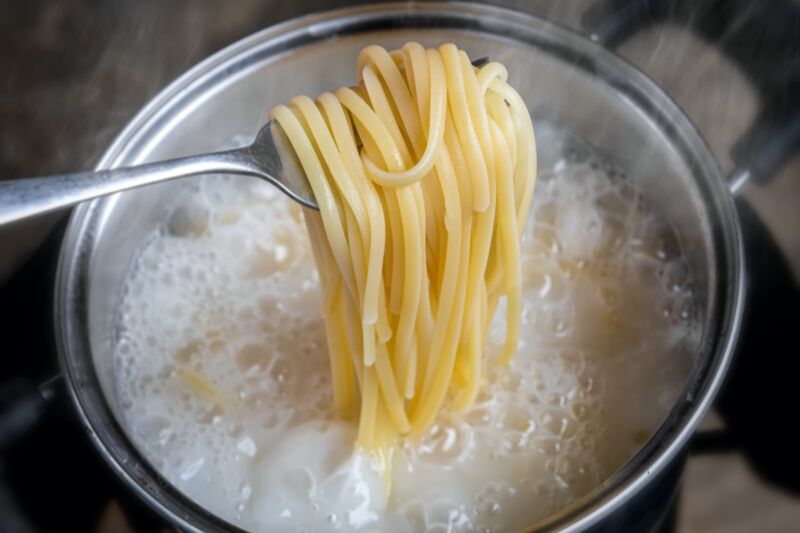How to tell if your spaghetti is perfectly done using just a simple ruler

Enlarge / Physicists at the University of Illinois Urbana-Champaign have demonstrated that using a ruler-rather than the time-honored method of throwing a spaghetti strand against the wall-may be the best way to confirm when pasta is fully cooked. (credit: Nopadol Uengbunchoo/Getty Images)
Scientists found themselves working from home along with most everyone else when universities shut down in the face of the COVID-19 pandemic-including laboratories, posing a unique challenge for experimentalists in particular. That's how physicists from the University of Illinois at Urbana-Champaign (UIUC) found themselves casting about for experiments that could be done at home in the kitchen. The physicists ended up investigating the physics of cooking pasta-first conducting home experiments, then repeating those with greater precision in the lab once the university reopened.
Cooking instructions on most packaged dried pastas typically recommend an 8 to 10 minute cooking time, but it's an imprecise method that can result in a great deal of variation in the consistency of the cooked pasta. Among other findings, the UIUC physicists came up with a simple technique, using just a ruler, to determine when one's spaghetti is perfectly al dente, with no need for the time-honored tradition of throwing a cooked strand against the wall-although the latter arguably requires less setup. (And yes, horrified Italians, the tasting method works just fine too. But where's the fun in that?)
A paper on their findings has just been accepted for publication in the journal Physics of Fluids, and two of the authors presented the work at this week's meeting of the American Physical Society in Chicago.
Read 19 remaining paragraphs | Comments